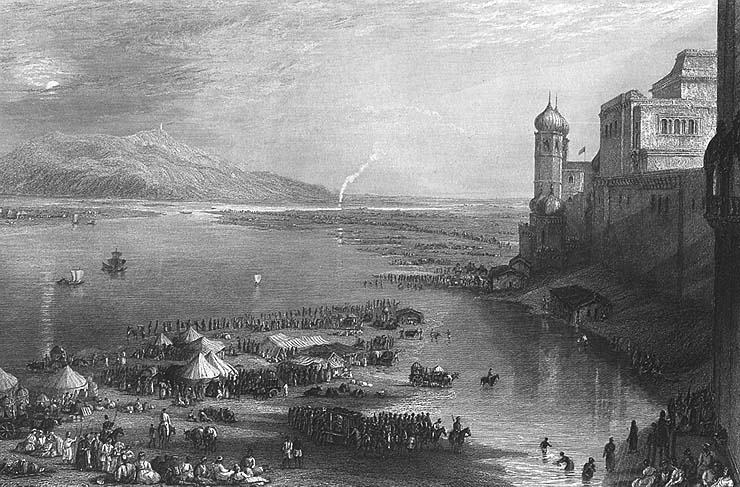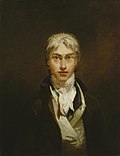Файл:Haridwar Kumbh Mela - 1850s.jpg
Haridwar_Kumbh_Mela_-_1850s.jpg (740 × 487 пкс, размер файла: 96 КБ, MIME-тип: image/jpeg)
Этот файл находится на Викискладе. Сведения о нём показаны ниже.
Викисклад — централизованное хранилище для свободных файлов, используемых в проектах Викимедиа.
Сообщить об ошибке с файлом |
Краткое описание
| ОписаниеHaridwar Kumbh Mela - 1850s.jpg | Haridwar Kumbh Mela - 1850s. Steel engraving | |||||||||||||||||||||||||||||||||||||||
| Дата | ||||||||||||||||||||||||||||||||||||||||
| Источник | ebay Antiques ASSEMBLAGE OF PILGRIMS BEFORE HURDWAR, IN THE BENGAL PRESIDENCY, also details | |||||||||||||||||||||||||||||||||||||||
| Автор |
Artist:
creator QS:P170,Q159758 ; Engraver:
creator QS:P170,Q18508682 |
|||||||||||||||||||||||||||||||||||||||
| Права (Повторное использование этого файла) |
|
|||||||||||||||||||||||||||||||||||||||
| Другие версии | Original Print - 1844, Pilgrims at the Sacred Fair of Hurdwar. | |||||||||||||||||||||||||||||||||||||||
Лицензирование
|
Это изображение является точной фотографической репродукцией оригинального двумерного произведения изобразительного искусства. Данное произведение изобразительного искусства само по себе находится в общественном достоянии по следующей причине:
Официальная позиция, занятая «Фондом Викимедиа», заключается в том, что «точные репродукции двумерных произведений изобразительного искусства, находящихся в общественном достоянии, также находятся в общественном достоянии, и заявления об обратном представляют собой нападки на саму концепцию общественного достояния». Для получения подробной информации см. Commons:Когда использовать тег PD-Art.
Эта фотографическая репродукция, следовательно, также считается находящейся в общественном достоянии. Просим учитывать, что в зависимости от местного законодательства повторное использование этого контента может быть запрещено или ограничено в вашей юрисдикции. См. Commons:Когда использовать тег PD-Art. | |||||
Description of image from Original
Kumbh Mela:It is difficult to convey an adequate idea of the grandeur and beauty that rende: Hurdwar one of the places most worthy of a traveller's attention in India, or to attempt to describe the diversified swarms of animate creation that, in the form of men and beasti of every race and clime, cover the whole ground around the holy station during the annual festival of the pilgrims at Hurdwar, in April. Horse-merchants from Bokhari and Cabool occupy the stony, central portions of the river; while those from Torkistai take up quarters behind the houses of the town. Elephant dealers incline to the suburb for the sake of fodder; but, morning and evening, traverse the roads with their studs, each elephant having a bell attached to its neck to give warning of approach. Buneas or grain-sellers, Hulwaes, or confectioners; cloth, shawl, and toy-merchants, occupy th roadside, close to the town; their dwelling-places being interspersed with enclosure containing piles of barley and straw, heaped up and ready for sale.
On the sides of the hill to the west, thousands of Seik families are clustered, wit their huts, tents, camels, bullocks, mules, and horses, crowded together in wild confusior Near these are the tents of the better order of visitors, in groups of two or three, an constructed of white or striped canvas, gaily fringed and ornamented with scatlope borflermgs of scarlet cloth. There, also, are the tents of the superior horse-dealers, Arab or Persian merchants, who have brought animals of the purest breed, for which they demand enormous prices. Men are there, too, with bears, leopards, tigers, deer of all kinds, monkeys, Persian greyhounds, beautiful cats, and rare birds for sale. In short, there are collected at this fair, samples of the most rare, beautiful, and costly of the productions of the East, natural and artificial; whiles Europe also contributes largely to the stock of valuable merchandise brought to this great mart for distribution among the swarming races of Hindoostan.
The crowding and confusion of buyers and sellers; the native groups in every imaginable variety of costume--some shining in cloth of gold, and surrounded by followers richly arrayed; others less expensively, but picturesquely, dressed, and many half-naked or wildly clad-all mingled together, among priests, soldiers, and religious mendicants-half beggar, half bandit; with here and there a cluster of Europeans mounted upon elephants, and affecting to look with supreme contempt upon the scene around them--exhibit altogether a combination of individualities that no other place in the world is capable of presenting. As may be easily imagined, the noise baffles all description.
During the time of the fair, the neighbouring roads are crowded by thousands of travellers in every description of vehicle, and mounted on elephants, bullocks, and camels, on horseback and on foot, arid of fall agefe, 'complexions, and costumes. As they pass the pagodas on their way, the air resounds with shouts of " Mahadeo Boll" which is repeated from front to rear, until the distant echoes take up the note, and the welkin rings with the cry of "Bol! Bol!" The fair and the ghaut divide the attention of persons whom mere curiosity has drawn to the spot. In the ghaut immense crowds succeed each other without intermission; the vast influx of people thronging to the river-side, especially at the auspicious moment in which ablution is considered most efficacious. This ceremony has, until of late years, been generally productive of serious accident. Formerly a narrow avenue led from the principal street to the ghaut; the rush through this was. tremendous, and numerous lives were lost-not fewer than seven hundred having fallen a sacrifice in one day to the enthusiastic zeal with which the devotees pressed forward to the river. The road has, however, been widened, and a convenient ghaut constructed by direction of the government; and the pilgrims at Hurdwar have since been able to perform an essential rite of their religion without danger.
The Brahmins are, of course, conspicuous in the throng: they collect the tribute, but do not otherwise exercise their sacerdotal functions, the bathing being performed without any peculiar ceremony: there are also a vast number of mendicants of every description, many being, from their filth, their distortion, or their nakedness, the most disgusting objects imaginable. The utter absorption of every faculty in the duty performed by the bathers, who are only intent upon saturating their bodies with the sacred waters, offers an extraordinary contrast to the listless, indifferent air of the European spectators, who, lazily reposing on their elephants, survey the scene at a convenient distance. A few missionaries distributing copies of the Scriptures translated into the various dialects of the East, are the only types of European intelligence that appear to take an interest in the scene around them.
Frequently, upon this occasion, a large congregation of the magnates of the land is assembled at Hurdwar. The Begum Sumroo, during her lifetime, would often make her appearance, with a retinue of 1,000 horse and 1,500 infantry. Here, also, was wont to assemble the Nawab of Nujibabad, the Rajahs of Ghuosgarh, Uchet, and Sadwa; the Putteeala rajah and his vakeel, whose attendants were distinguished by their light yellow turbans and sashes; and the Rajah of Balespoor in the mountains: all of whom, the latter especially, making it a point to traverse the fair mornings and evenings. The Balespoor rajah usually appeared seated on a remarkably tall elephant, in a large howdah overlaid with plates of solid silver glistening in the sun, and covered with a pointed dome-like canopy of scarlet, supported on four silver pillars richly embossed. He wore a large white conical turban; and amongst the jewels that adorned his person were two enormous pearls, set as ear-rings, the hoops being of gold three inches in diameter. A servant sat behind him, waving slowly, backwards and forwards over his head, a splendid chowrie, or feather-fan, as an emblem of rank. Many of his relatives followed upon elephants caparisoned in various degrees of splendour, surrounded by horsemen showily dressed and accoutred, capering and curvetting about. Besides these were the usual rabble route on foot (the constant attendants upon Eastern sovereignty), crowding in the rear, heedless of the vicious animals rearing and leaping on all sides, as their riders fired off muskets, matchlocks, and pistols, and made the adjacent hills reverberate with the sound. Among these wild but truly Oriental pageants, Rhutz (four-wheeled carriages) abound at the fair, the roofs covered with white linen or scarlet cloth, and terminating with ornaments of gold or silver: these are chiefly occupied by women, six or eight of whom are crowded into one vehicle; small curtained apertures at the sides, enabling them to snatch hasty glances at the multitude around, without themselves being visible. Troops of dancing-girls also establish themselves at Hurdwar during the fair, and are to be seen performing either in front of the houses, or in the interior of the dwellings of the rich inhabitants.
As soon as darkness sets in, the whole of the river, the town, and the inhabited portion of the forest, present a continuous blaze of illuminations, the display being varied by occasional bursts of fireworks. Nothing can be more pleasing than the effect of the lamps, sparkling and gleaming between the trees; while the islands and woody shores of the river are distinctly marked by innumerable vessels of oil, kindled and sent floating down the stream.
At these immense annual gatherings the peace of the promiscuous multitude is usually preserved by a large detachment from the Sirmoor battalion of Goorkas, or hill-rangers, who come down from their quarters at Deyrah Dhoon, and garrison one of the islands in the centre of the river, where they are out of the way, and yet sufficiently near to prevent disturbance. A considerable body of police, with the civil magistrates, are also present to enforce regulations for the preservation of order.
Краткие подписи
Элементы, изображённые на этом файле
изображённый объект
История файла
Нажмите на дату/время, чтобы посмотреть файл, который был загружен в тот момент.
| Дата/время | Миниатюра | Размеры | Участник | Примечание | |
|---|---|---|---|---|---|
| текущий | 17:51, 23 мая 2008 |  | 740 × 487 (96 КБ) | Abhishekjoshi | {{Information |Description= Haridwar Kumbh Mela - 1850s. ASSEMBLAGE OF PILGRIMS BEFORE HURDWAR, IN THE BENGAL PRESIDENCY. FROM THE ORIGINAL DESCRIPTION: This important city, the principal seat of the government of British India, is situated |
Использование файла
Следующая страница использует этот файл:
Глобальное использование файла
Данный файл используется в следующих вики:
- Использование в af.wikipedia.org
- Использование в ar.wikipedia.org
- Использование в en.wikipedia.org
- Использование в gu.wikipedia.org
- Использование в hi.wikipedia.org
- Использование в kn.wikipedia.org
- Использование в ml.wikipedia.org
- Использование в mr.wikipedia.org
- Использование в pa.wikipedia.org
- Использование в pt.wikibooks.org
- Использование в ta.wikipedia.org
- Использование в te.wikipedia.org
Метаданные
Файл содержит дополнительные данные, обычно добавляемые цифровыми камерами или сканерами. Если файл после создания редактировался, то некоторые параметры могут не соответствовать текущему изображению.
| _error | 0 |
|---|

